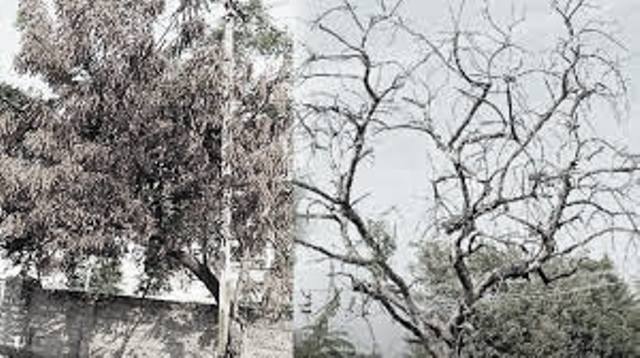Hyderabad: Neem trees across the state are wilting and drying up, possibly due to an outbreak of a fungus that causes ‘die-back disease,’ causing concern and alarm among residents.
Agricultural scientists, on the other hand, assure that there is no cause for concern and that the fungus’s impact will fade on its own, resulting in tree rejuvenation. Scientists are working hard to determine whether the ongoing wilting and drying were caused by die-back disease. They cautioned people not to cut down trees because they thought they were dead because the trees could regenerate.
A similar infection was reported in several parts of the state last year. Professor Jayashankar Telangana State Agriculture University (PJTSAU) has now formed a Special Committee to inspect, assess, and take appropriate action.
The Committee has already inspected several locations, including the Agricultural Research Institute in Rajendranagar, where a high incidence of infection in Neem trees was discovered in September.
Apart from that, many areas in Rangareddy, Sangareddy, Wanaparthy, Gadwal, Nagar Kurnool, Karimnagar, Warangal, and other districts have been inspected, and extensive mapping is being carried out to raise farmer awareness.
According to scientists, there could be a variety of causes, including excessive rainfall and high humidity in August and September.
According to scientists, this problem could be caused by a variety of factors, including excessive rainfall and high humidity during August and September. According to Professor Jagadeeshwar of PJTSAU, the infected neem plants displayed various symptoms such as complete wilting, drying of the entire tree, drying of the twigs, and gummosis.
In September, soil samples, young twigs, stems, bark, and other plant materials were collected from infected trees and examined microscopically. He explained that alpha and beta conidia of Phomopsis Azadirachtae and Fusarium conidia (Macro conidia) were found to be the causative factors for wilting, drying, and die-back symptoms in neem trees.
The fungus is not dangerous to humans or livestock. He claims that fresh leaves, twigs, and other parts of the infected tree can be used for a variety of purposes.To reduce the incidence, spraying Carbendazim or applying Mancozeb Carbendazim to the affected areas, as well as spraying Thiamethaxom or Acetamaprid, is commonly used. Spraying chemicals to control the spread of infection, on the other hand, could be harmful.
Chemical residues on leaves could be harmful to cattle if they consume them. Similarly, the chemicals could pollute nearby water bodies, and drinking such water could be harmful, he added, emphasizing that neem trees regenerate.

